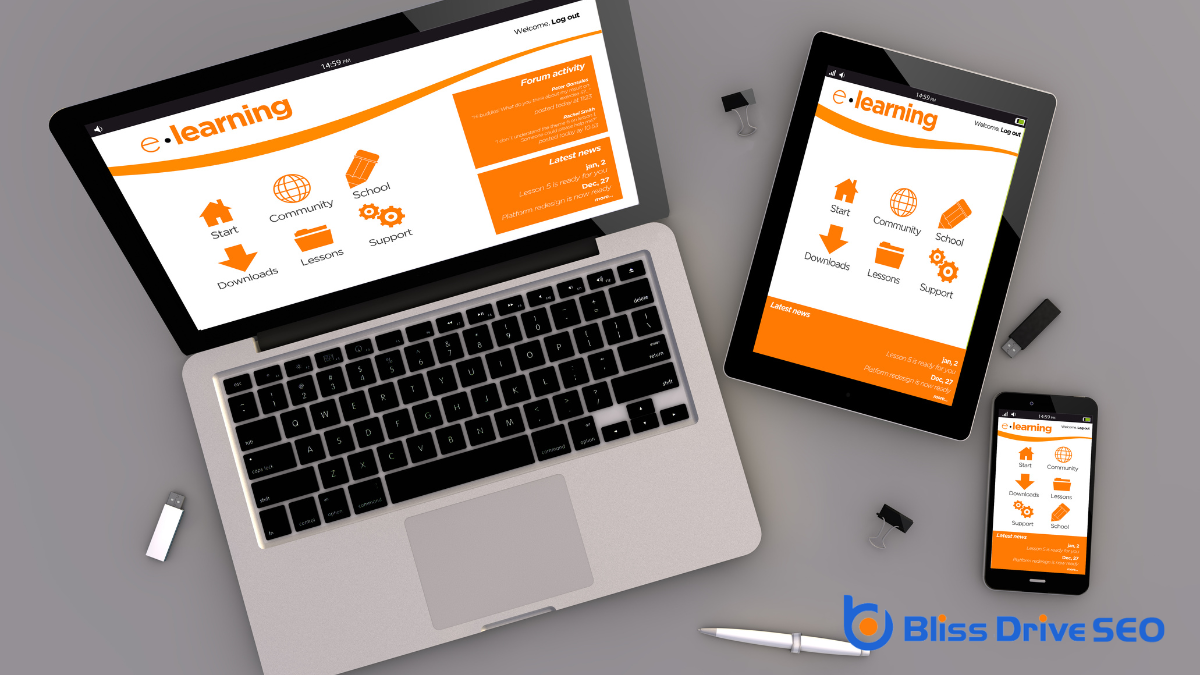Digital Marketing Services
Learn More About Us

When you think about web apps, your mind might jump to popular social media platforms like FacebookA social networking site where users can post comments, share photographs, and links to news or othe... and InstagramA photo and video-sharing social networking service owned by Facebook., where you connect and share with others. But have you considered how e-commerce giants like Amazon transform shopping into a seamless online experience or how Google Drive and Dropbox simplify file sharing? These are just a few examples, yet the scope of web applications stretches even further. Imagine managing your finances with online banking or streaming your favorite shows on Netflix. Curious about other web apps that shape our daily digital interactions? There's more to discover as we explore this expansive digital landscape.
When you think of social media platforms, giants like Facebook, Instagram, and TwitterA microblogging and social networking service where users post and interact with messages known as "... instantly come to mind. These platforms represent a significant portion of the web app landscape. Each one allows you to connect with others, share content, and engage in conversations on a global scale.
Facebook, for instance, provides a space for you to interact through posts, groups, and events, making it a versatile tool for both personal and professional networking.
Instagram focuses on visual storytelling, allowing you to share images and videos with followers. It's particularly popular among creatives and businesses looking to showcase their products visually. You can engage with your audience through likes, comments, and direct messages, all within a sleek, user-friendly interface.
Twitter, on the other hand, is designed for quick, real-time communication. It's perfect for staying updated on news and trending topics. You can express your thoughts in short, concise tweets and engage with others through retweets and replies.
These platforms are accessible from any device with internet access, making them convenient for keeping in touch with the world. Understanding their unique features helps you leverage each platform effectively.

While social media platforms connect you with the world, online banking services revolutionize how you manage your finances. These web apps allow you to access your bank account from anywhere, anytime. You can check your balance, transfer funds, and even pay bills without stepping into a bank. It's all about convenience and control at your fingertips.
When you use online banking, you're not just saving time; you're enhancing your financial literacy. Many banking apps provide insightful tools, like budgeting features and spending trackers, that help you make informed financial decisions. Imagine having a detailed report of your monthly expenses – that's the power of modern banking apps.
Security is a top priority for these services. Banks employ robust encryption and multi-factor authentication to protect your personal information. You'll find that most apps offerThe specific product or service being promoted by affiliates. alerts for unusual transactions, keeping you one step ahead of potential fraud.
Navigating an online banking app is straightforward. The user-friendly interface guarantees you won't need a manual to figure things out. From setting up automatic payments to finding ATMs, everything is designed with your convenience in mind.
When you explore e-commerce websites, you'll encounter popular platforms like Amazon, eBay, and Shopify.
These platforms offer key features such as user-friendly interfaces, product recommendations, and secure checkout processes.
To enhance user experience, they seamlessly integrate with various payment systems, making online shopping easy and convenient.
Over the past decade, e-commerce platformsSoftware solutions that allow businesses to create and manage online stores, such as Shopify, WooCom... have revolutionized the way we shop, offering unparalleled convenience and a vast array of choices. You've likely encountered popular platforms like Amazon, eBay, and Shopify, which have become household names. These platforms allow you to buy almost anything, from groceries to gadgets, with just a few clicks.
Amazon stands out as a leader, boasting a massive selection and fast delivery options. Its user-friendly interface makes it easy for you to find what you need, compare prices, and read reviews from other buyers.
eBay offers a unique experience with its auction-style listings, giving you the chance to score great deals on both new and used items. Plus, its global reach means you can shop from sellers worldwide.
Shopify, on the other hand, empowers businesses to create their own online stores. If you're a budding entrepreneur, Shopify provides a robust platform to showcase and sell your products without needing extensive technical skills. By offering customizable templates and built-in marketing tools, it helps you reach a broader audience.
These platforms exemplify how e-commerce has transformed shopping into a seamless, efficient, and flexible experience for everyone.
Although e-commerce websites vary in design and purpose, they share several key features that enhance the shopping experience. One of the most important is user-friendly navigation. You want your customers to find products easily, so intuitive menus and search bars are essential. Clear categories, filters, and sorting options allow users to quickly locate what they need without frustration.
Another vital feature is detailed product information. You should provide high-quality images, thorough descriptions, and specifications to help customers make informed decisions. Consider adding customer reviews and ratings as well since they build trust and can influence purchasing decisions.
Next, focus on the shopping cart and checkout process. A streamlined, hassle-free experience can greatly reduce cart abandonment rates. Make sure users can easily add or remove items and view their cart's contents at any time. Additionally, a simple checkout process, preferably with guest options, makes purchasing straightforward and convenient.
Lastly, guarantee your site is mobile-responsive. With more people shopping on their phones, your website must adapt seamlessly to different screen sizes. This enhances accessibility and can boost your sales by reaching a wider audience.
Prioritizing these features will create a smoother and more effective e-commerce experience.
Building upon the foundation of user-friendly navigation and detailed product information, integrating with reliable payment systems is key to completing the e-commerce experience. You want customers to feel secure and confident when making a purchase on your site.
Offering a variety of payment options, such as credit/debit cards, PayPal, and digital wallets like Apple Pay or Google Pay, guarantees that users can choose their preferred method, enhancing convenience and trust.
Seamless integration with these payment systems involves embedding secure APIs and guaranteeing compliance with industry standards like PCI DSS. This not only protects sensitive customer data but also safeguards your business against potential threats.
Consider partnering with reputable payment gateways, such as Stripe or Square, which provide robust security features and support for multiple currencies.
Managing your inbox efficiently can be streamlined with the right email client. As you navigate through countless messages daily, web-based email clients like Gmail, Outlook, and Yahoo Mail offer essential tools to keep you organized and productive.
These platforms allow you to access your emails from any device with an internet connection, so you're not tethered to a single computer.
With Gmail, you get advanced search capabilities, labels, and filters to categorize and prioritize your emails effortlessly. It integrates seamlessly with other Google services, enhancing your workflow.
Outlook, often favored in professional settings, provides robust calendar integration and collaboration features, making it easy to schedule meetings and share files. Its intuitive interface helps you manage multiple accounts without hassle.
Yahoo Mail, while less popular than its competitors, still offers a user-friendly experience with ample storage and customizable themes. You can use its powerful search tool to find archived emails quickly.
These web-based email clients also support add-ons and extensions, allowing you to tailor them to your specific needs.
Whether you're managing personal correspondence or overseeing a business operation, choosing the right email client can transform how you handle digital communication.

When it comes to safeguarding your digital files, cloud storage solutions offer both convenience and security. You don't have to worry about losing important documents or photos to a computer crash because everything's stored online. Services like Google Drive, Dropbox, and Microsoft OneDrive let you save files in the cloud, making them accessible from any device with an internet connection.
Uploading and retrieving your files is straightforward. You'll start by creating an account with a chosen service, where you'll upload your documents, images, or any other files. These services often offer a free tier with limited storage space, with options to upgrade for more capacity.
Security is a top priority for cloud storage providers. They use encryption to protect your data both during transfer and while stored. It's essential to choose strong, unique passwords and consider enabling two-factor authentication for an extra layer of security.
Beyond simple storage, cloud services offer features like file sharing and automatic backups. You can easily share files with others, controlling who can view or edit them.
Automatic backups guarantee your data is continuously updated, freeing you from manual saving.
In today's interconnected world, teamwork's effectiveness often hinges on the use of collaborative tools. These web apps streamline communication, enhance productivity, and keep your team on the same page, no matter where everyone is located.
You've probably heard of or even used tools like Slack and Microsoft Teams. They enable instant messaging, video calls, and file sharing, making real-time collaboration seamless.
Consider Google Workspace, which includes Docs, Sheets, and Slides. You can work on documents simultaneously with your team, tracking changes and providing feedback instantly. This guarantees that everyone's contributions are visible and incorporated efficiently.
Trello and Asana are other popular apps that help you manage projects by organizing tasks, setting deadlines, and tracking progress, all in a visually intuitive way.
Collaborative tools aren't just for corporate environments. Platforms like Miro and Figma cater to creative teams, offering virtual whiteboards and design spaces for brainstorming and prototyping.
These tools foster creativity and guarantee that ideas flow freely, unhindered by geographical barriers.
When you think about streaming services, popular platforms like Netflix, Spotify, and Disney+ probably come to mind.
These apps offer features such as personalized recommendations and offline downloads, enhancing your viewing and listening experience.
Streaming technology has evolved rapidly, offering you high-quality content at your fingertips anytime, anywhere.
Why are streaming platforms so popular today? It's because they offer immediate access to a vast library of content without needing to download anything. You can watch movies, TV shows, and live events from the comfort of your home or on the go. This convenience has changed how we consume entertainment, making streaming platforms indispensable.
When considering popular streaming platforms, think about:
These platforms are popular because they cater to different tastes and preferences, ensuring there's always something new to discover. They also offer personalized recommendations, making it easier to find content you'll love.
Streaming apps revolutionize how you access and enjoy media by offering a multitude of features designed for convenience and personalizationTailoring content and offers to individual users based on their behavior, preferences, or demographi....
First, you've got the power to stream content on-demand, giving you the freedom to watch your favorite shows and movies whenever you want. No more waiting for scheduled broadcasts. With a simple tap, you can immerse yourself in a vast library of content.
Personalization is key. Streaming apps often come with recommendation algorithms that suggest shows or movies based on your viewing history. This means you spend less time searching and more time enjoying. You can also create personalized playlists or watchlists, keeping your must-watch content in one place.
Another standout feature is multi-device compatibility. You can start watching a movie on your smartphone during your commute and finish it on your TV at home. Streaming services guarantee a seamless shift across devices.
Offline viewing is a game-changer, too. Download your favorite series or movies and watch them without an internet connection, perfect for travel or spots with unreliable Wi-Fi.
Lastly, parental controls give you peace of mind by allowing you to manage what content is accessible to children, guaranteeing a family-friendly experience.
Over the years, the evolution of streaming technology has transformed how you consume media, making it more accessible and user-friendly. Streaming services like Netflix, Spotify, and YouTube have capitalized on this evolution, offering you vast libraries of content at your fingertips.
Initially, streaming relied heavily on buffering and required robust internet connections. However, advancements in compression algorithms and network infrastructure have greatly improved the quality and speed of delivery.
Nowadays, you can enjoy your favorite shows, movies, and music without the hassle of downloads or physical media. Here are a few key advancements that have shaped the current state of streaming:
These innovations mean you can watch or listen to what you want when you want, and on any device. Streaming has become an integral part of your daily life, shaping how you interact with media and entertainment.

How have online learning platforms transformed the educational landscape? They've made education more accessible and flexible. With these platforms, you can learn at your own pace, anytime and anywhere, breaking the traditional classroom barriers. Whether you're a high school student, a professional seeking new skills, or simply curious about a subject, online learning platforms cater to your needs.
Web apps like Coursera, Udemy, and Khan Academy offer a vast array of courses across different subjects. They provide interactive contentContent that requires user interaction, such as quizzes, polls, or calculators., including videos, quizzes, and forums, making learning engaging and effective. Some platforms even offer certifications that can boost your resume.
Moreover, these platforms often feature courses from renowned universities and experts, bringing high-quality education to your fingertips. You don't need to worry about commuting or sticking to a rigid schedule. Instead, you focus on what matters: learning.
Online learning platforms also encourage a community-driven approach, connecting you with fellow learners worldwide. You can collaborate, share experiences, and support each other, enriching your educational journey.
Managing projects efficiently is essential for success, and project management apps have revolutionized this process. These tools empower you to organize tasks, allocate resources, and monitor progress seamlessly. By using project management apps, you can stay on top of deadlines, collaborate with team members, and guarantee that every aspect of your project runs smoothly.
They're designed to simplify complex workflows and enhance productivity.
With a variety of options available, you can choose the app that best fits your needs. Here are some key features to look out for:
Apps like Trello, Asana, and Monday.com are popular choices, offering intuitive interfaces and robust functionalities. They allow you to customize your workflow, making it easier to adapt to your team's unique process.
Whether you're managing a small team or a large organization, these apps provide the structure and flexibility needed to handle any project efficiently. Embrace technology, and let these project management tools drive your success.
When you explore health and fitness trackers, you'll discover popular platforms like MyFitnessPal, Fitbit, and Strava.
These apps offer valuable insights into your daily activity and help you set and achieve fitness goals.
Using them, you can enhance your well-being and stay motivated on your health journey.
Fitness tracking platforms have revolutionized the way we monitor our health and wellness. They offer a seamless way to keep track of your daily activities, exercise routines, and even your sleeping patterns. By using these platforms, you can gain insights into your fitness journey and make informed decisions about your health.
Whether you're a beginner or an experienced athlete, there's a platform tailored to fit your needs.
Consider these popular fitness tracking platforms:
Each of these platforms offers unique features that cater to different aspects of fitness.
As you explore various fitness tracking platforms, you might wonder why these tools have become so integral to our daily lives. Health trackers offer a clear view of your physical activity, sleep patterns, and even heart rate. They provide actionable data that helps you make informed decisions about your lifestyle. When you see how much you've moved or how well you've slept, you're more motivated to improve these areas.
By setting and tracking goals, you maintain accountability, which is essential for achieving your fitness aspirations. Health trackers remind you to stay active, nudging you to take those extra steps or squeeze in a workout. They also help you identify trends over time, giving you insights into what works best for your body.
Another significant benefit is the ability to monitor your overall health. These devices alert you to irregularities, like an abnormal heart rate, which can prompt you to seek medical advice sooner rather than later.
You'll also find that many trackers offer stress management features, guiding you through relaxation techniques when needed.
In essence, health trackers empower you to take control of your well-being, making it easier to leadA potential customer referred by an affiliate who has shown interest in the product or service but h... a healthier, more balanced life.
You've explored a diverse array of web applications that impact your daily life. From staying connected on social media and managing finances through online banking to shopping effortlessly on e-commerce sites and storing files in the cloud, web apps are indispensable. They're your gateway to entertainment on streaming platforms, learning on educational sites, managing projects, and even tracking fitness goals. Embrace these tools to enhance productivity, convenience, and enjoyment in this digital age.
